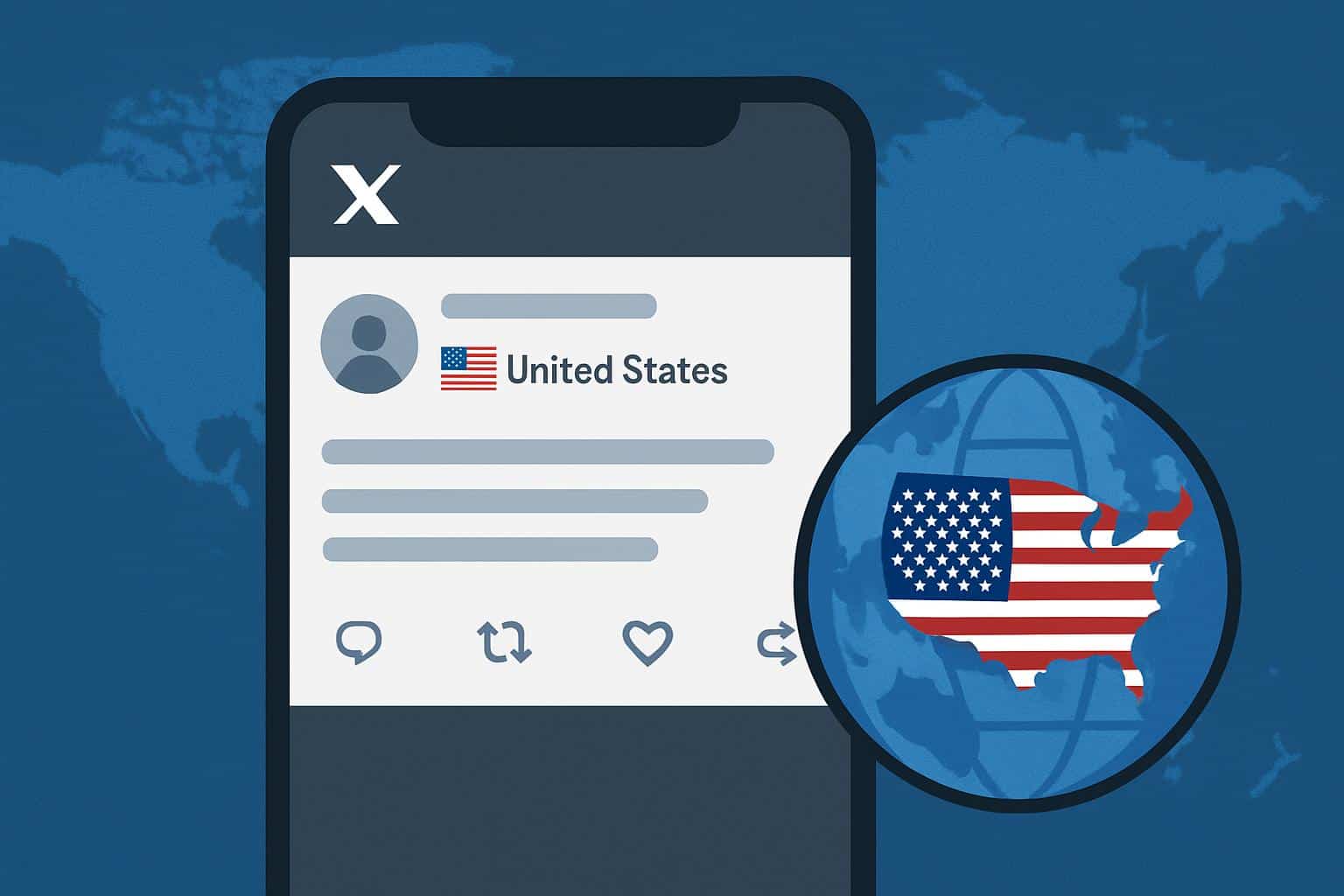X is experimenting with a new transparency feature that will show the country users are posting from, a change touted as part of a larger effort to restore trust on the platform. Led by head of product Nikita Bier, the effort supplements optional profile fields with system-generated signals designed to provide audiences with a better sense of who they’re reading.
Bier says X is trying out a new profile section, with an area that could display the country tied to recent posting activity, the date of account creation, how the account usually accesses X (like iOS, Android, or the web), and the number of times a username has been changed. Instead of a profile’s self-reported location, the country would be “imputed” by X rather than user-inputted, with toggles to obscure specific details.

What X says it will show on profiles and posts
Most important is the country label, which X says will show where these posts come from, not what a profile purports to. That distinction is important: A user who lists “New York” may be posting from another country or in transit, or may be on infrastructure that routes traffic differently. X will also surface metadata like “Joined” date, access method, and a count of username changes — signs that both investigators and regular users often use to gauge authenticity.
Bier has said there will be toggles to hide certain fields. But anything a user sets for themselves will be flagged, letting everyone know it’s something told to the system by the user rather than its usual inference. X hopes to refine the fields during testing, initially using a small number of employee accounts to gather input before any broader rollouts.
Why Country Labels Might Make a Difference
Country context can matter when news is breaking, elections are happening, or market-moving rumors begin to circulate. A post on local conditions reads differently when it’s being written from inside the country rather than thousands of miles away. Research groups including the Stanford Internet Observatory and Graphika have cataloged influence operations that deliberately hide operators’ real origin; a platform-level label, even at the broad country level, offers readers yet another way to assess credibility.
The change also comes in response to a void after the revision of verification. When Elon Musk ditched the former verified system, space was given to spam accounts and fakes with even more visibility due to paid checkmarks via X Premium. X claims that richer, standardized account context is a better road to trust than a single badge. Musk has said the platform reaches more than half a billion monthly users, and at that kind of scale, lightweight provenance cues can sway how information moves.
Privacy and safety questions raised by country labels
There are privacy and security concerns with any shift in transparency levels. Even on a country level, labels can put activists, journalists, or diaspora communities at risk of harassment or lawsuits if visibility controls are opaque or default to public. Civil society groups and privacy advocates have long warned that location inference — even when geotags are not precise — can exacerbate doxxing and cross-border intimidation.

There are also technical and policy edge cases. IP-based detection may be distorted by VPNs, CDNs, or corporate networks, possibly misclassifying travelers or remote workers. Under European privacy regulations like the GDPR, platforms have to justify why they are processing location data and offer substantive consent and control. But X’s intent to enable toggles and to mark user-configured fields will be compared against those guidelines, especially if labels feature prominently on profiles or individual posts.
How it compares to transparency tools on rival apps
Meta provides adjacent transparency tools: Facebook’s Page Transparency section notes the primary country of Page managers, and for notable accounts, Instagram offers an About This Account that includes date joined, former usernames, and ads activity. Those features came after the service was repeatedly targeted by coordinated inauthentic behavior. X’s method borrows from that playbook but uses it more broadly for regular profiles, not just Pages or high-reach accounts.
Carefully implemented, a mishmash of “Joined” dates plus username history and country tags can help users assess how new accounts that pivot identities or launder origin really are. On the other hand, false confidence from any single label can also confuse; transparency features are best as contextual signals, not as pronouncements on credibility.
Rollout timeline and key questions to watch for next
X will test it on a few internal profiles before offering the tool more broadly. Key questions include whether or not country labels will be listed on individual posts, how frequently the labels update for frequent travelers, and default settings for new users (and existing ones). How X deals with VPNs, proxies, and edge cases will steer the accuracy thresholds—where trust is built or confusion sown.
Equally important is whether transparency can work consistently at all. If advertisers, high-reach accounts, and new sign-ups are all given the same shake, the feature could significantly increase friction around organized misinformation. If not, it runs the risk of being cosmetic. Either way, the test is an indication that X is looking for a middle ground between paid verification and platform-provided provenance — one in which who’s saying what, from where, becomes a bit more evident.

